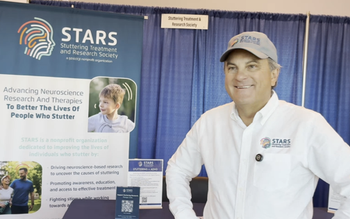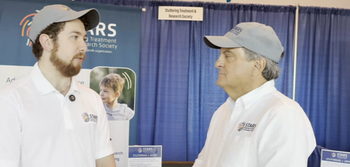
Fast-Acting Options for Mood Disorders and Psychiatric Emergencies
What treatments could handle both psychiatric emergencies and long-standings mental health conditions—in a hurry?
CONFERENCE REPORTER
Psychiatry may be lagging behind other branches of medicine in an important way.
“In the rest of medicine, as you increase the acuity you increase the number of treatments,” Nolan Williams, MD, told the attendees of the 2021 American Psychiatric Association (APA) Annual Meeting, but in psychiatry, “as we increase acuity we actually lose treatment options.”
Williams and his fellow presenters at a panel on rapidly acting medications1 all had the same question: How can psychiatrists design treatments to respond to sudden-onset conditions?
Williams, assistant professor of psychiatry and behavioral sciences at Stanford University Medical Center, described the situation as “emergency room purgatory.” Because of slow-acting treatments and limited hospital capacity, “the whole process of going through the inpatient unit can take several months,” he said. “The only treatment that we have available for these folks is ECT [electroconvulsive therapy.” But ECT is available in only 10% of US hospitals.
However, psychiatrists might have other options for fast-acting treatments. He shared
In initial numbers from his study of patients with a treatment-resistant mood disorder (TRD), Nolan found that after 5 days of sessions (10 hourly sessions at 1800 theta-burst pulses per hour), participants improved. On the Montgomery Asberg Depression Rating Scale (MADRS), he found an 80% average reduction of participants MADRS scores.
Another options for fast-acting treatment is ketamine. Charles DeBattista, MD, professor of psychiatry and behavioral sciences at Stanford University, presented evidence for its efficacy for TRD. He noted that ketamine is an anesthetic agent, a μ-opioid agonist, and while its effects on TRD are rapid, making it potentially helpful in psychiatric emergencies. “Often within a couple of hours to a day, patients experience a significant improvement, and the effects were sustained for a week or so,” he said. These effects did decrease after a week, but there is also evidence that repeated injections may lead to
DeBattista also presented the option of esketamine, which has been fast tracked by the US Food and Drug Administration for treating TRD and acute suicidality in MDD. Multiple studies have found that it rapidly
New mothers represent another population that might benefit from fast-acting medications. “Maternal mental health is something that’s been an enormous problem forever,” said Samantha Meltzer-Brody, MD, MPH. “Those of us that have the privilege of working with perinatal women are always struck by how debilitating PPD [postpartum depression] can be.” Rapidly acting medications could reduce mortality and morbidity, she said, and allow for more positive interactions between mothers and their newborns.
Although many selective serotonin reuptake inhibitors are approved to treat PPD, she pointed out that their initial effects may not be felt for weeks or even months, and many women’s symptoms do not respond to them. Meltzer-Brody, the Assad Meymandi Distinguished Professor and Chair in the University of North Carolina Department of Psychiatry, also considers an alternative to these medications: neurosteroids like brexanolone.
In a 2018 paper, Meltzer-Brody and her coauthors found brexanolone to be effective for
With these new options, it seems psychiatry may not lag behind other branches of medicine for long.
References:
1. Williams N. Developing rapidly acting antidepressants: neurosteroids, dissociative agents (Ketamine Analogues and Psilocybin), and Accelerated Theta Burst r-TMS. Paper presented at: American Psychiatric Association Annual Meeting; May 1-3, 2021; virtual.
2. Nettekoven C, Volz LJ, Kutscha M, et al. Dose-dependent effects of theta burst rTMS on cortical excitability and resting-state connectivity of the human motor system. J Neurosci. 2014;34(20):6849-6859.
3. Li CT, Chen MH, Juan CH, et al. Efficacy of prefrontal theta-burst stimulation in refractory depression: a randomized sham-controlled study. Brain. 2014;137(Pt 7):2088-2098.
4. Yip AG, George MS, Tendler A, et al. 61% of unmedicated treatment resistant depression patients who did not respond to acute TMS treatment responded after four weeks of twice weekly deep TMS in the Brainsway pivotal trial. Brain Stimul. 2017;10(4):847-849.
5. Murrough JW, Perez AM, Pillemer S, et al. Rapid and longer-term antidepressant effects of repeated ketamine infusions in treatment-resistant major depression. Biol Psychiatry. 2013;74(4):250-256.
6. Canuso CM, Singh JB, Fedgchin M, et al. Efficacy and safety of intranasal esketamine for the rapid reduction of symptoms of depression and suicidality in patients at imminent risk for suicide: results of a double-blind, randomized, placebo-controlled study. Am J Psychiatry. 2018;175(7):620-630.
7. Fu DJ, Ionescu DF, Li X, et al. Esketamine nasal spray for rapid reduction of major depressive disorder symptoms in patients who have active suicidal ideation with intent: double-blind, randomized study (ASPIRE I). J Clin Psychiatry. 2020;81(3):19m13191.
8. Meltzer-Brody S, Colquhoun H, Riesenberg R, et al. Brexanolone injection in post-partum depression: two multicentre, double-blind, randomised, placebo-controlled, phase 3 trials. Lancet. 2018;392(10152):1058-1070.
Newsletter
Receive trusted psychiatric news, expert analysis, and clinical insights — subscribe today to support your practice and your patients.

















